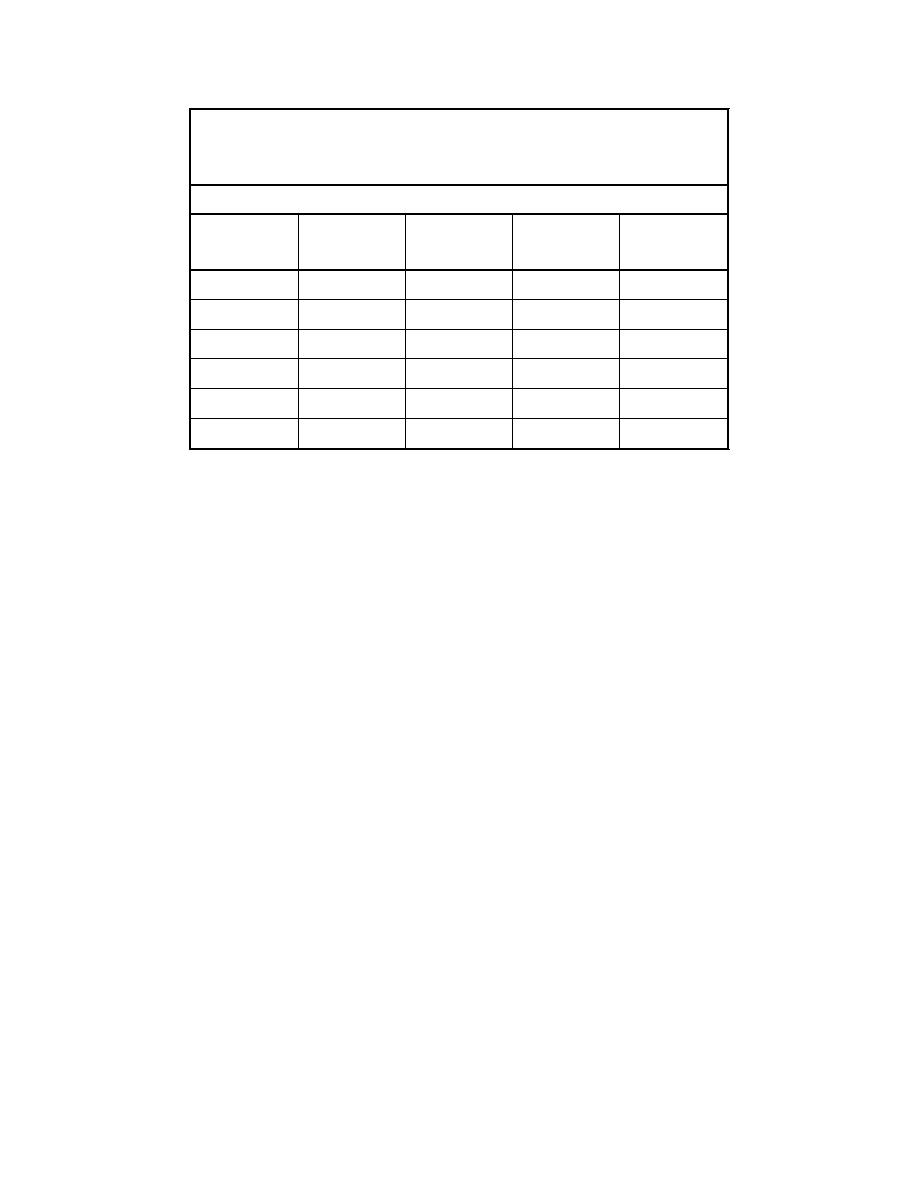 |
||
|
|
||
|
Page Title:
Table 6. Episodic Erosion Thickness Estimates for Mud Dump Site for 0.4-mm Sand Caps |
||
| |||||||||||||||
|
|
 Table 6
Episodic Erosion Thickness Estimates for Mud Dump Site for
0.4-mm Sand Caps
Combined Hurrican/Northeaster Single-Year Erosion Frequency, ft
Base Depth/
Mound Height/
Crest Depth, ft
10 years
25 years
50 years
100 years
63/13/50
2.4
3.0
3.4
3.9
63/08/55
1.6
2.1
2.3
2.6
73/13/60
1.5
1.8
2.0
2.3
73/08/65
1.0
1.3
1.5
1.7
83/13/70
0.9
1.2
1.3
1.6
83/08/75
0.7
0.8
0.9
1.1
It is very important to note that the erosion values predicted by this
curve and reported in the table are the maximum erosion experienced any-
where on the mound. Qualitatively, the maximum erosion is present over
a very small portion of the mound, typically one corner on the seaward
side (see Figure 29). Average erosion over the entire mound is expected
to be much less, perhaps two-thirds of the maximum value, though this
value will be a function of mound geometry, water depth, wave climate,
and cap material and grain size.
In addition to maximum erosion expected from a severe storm year, the
average-year cumulative erosion should be computed. To accurately com-
pute average cumulative erosion, a time series of mound erosion resulting
from typical storms (and nonstorm conditions if they are expected to pro-
duce erosion) over periods of between 5 and 10 years should be computed.
During these model runs, the initial mound geometry would be impacted
by a series of storms (or day-to-day conditions if warranted), with the re-
sulting mound geometry from the previous storm becoming the input
mound geometry for the following storm. Statistics on average and maxi-
mum erosion over the mound should be computed for time periods of say
1, 2, 5, and 10 years.
Using the above information on maximum episodic erosion thickness
and cumulative annual erosion, the cap designers can then choose the re-
turn period erosion that provides the desired level of comfort or degree of
risk. Factors that may influence the decision include the amount of uncer-
tainty in the erosion prediction, the relative levels of annual versus epi-
sodic erosion, the level of contamination of the sediments being capped,
whether or not additional material is expected to be placed on top of the
project in the next few years, the difference in thickness required between
a short and long return period, nearness of valuable resources/predicted
consequences of the cap breeching, relative portion of the cap required for
erosion compared with chemical isolation, bioturbation and consolidation,
the unit/total cost of capping, difficulty in finding capping material and
95
Chapter 8 Long-Term Cap Stability
|
|
Privacy Statement - Press Release - Copyright Information. - Contact Us - Support Integrated Publishing |